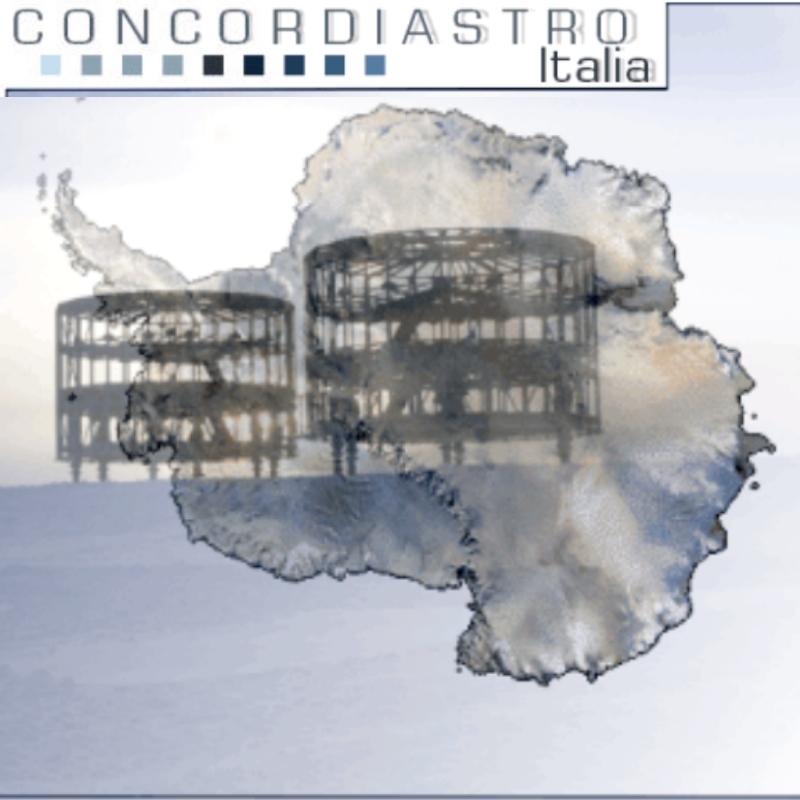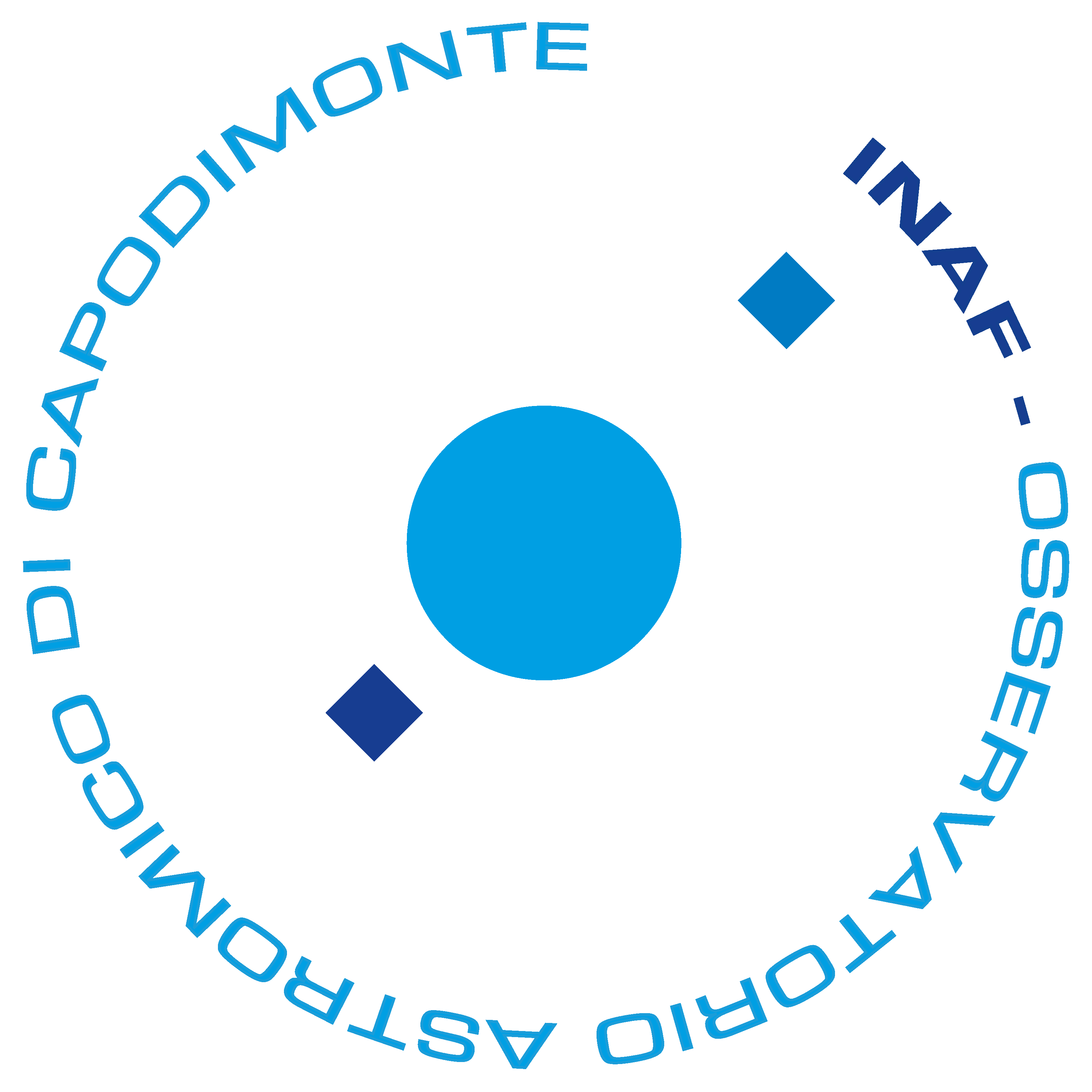
CONCORDIASTRO è un programma franco-italiano di sviluppo di osservazioni astronomiche al Dome C in Antartide. La parte francese, gestita dall’Università di Nizza, si propone di effettuare osservazioni di Alpha Centauri nell’ambito dello studio delle oscillazioni stellari.
La parte italiana, gestita dall’Osservatorio Astronomico di Capodimonte, si propone di effettuare osservazioni del Sole ad alta risoluzione per lo studio del seeing solare.
Introduction
The rationale for observing the Sun from Antarctica has traditionally been the need for long, uninterrupted time-series of data (Fossat, Grec and Pomerantz 1981, Duvall et al. 1991), in the framework of studies of solar oscillations. State-of-the-art helioseismology, however, begun to take advantage of the deployment of networks of observing stations in more accessible sites around the globe (GONG, IRIS, BISON, TON), or of data from satellite experiments (SOHO). These experiments provide full-disk solar images whose best spatial resolution is 2″/pixel, and the fastest acquisition rate is typically one minute. The fact that the South Pole site, where most helioseismological campaigns have been carried out, is not exceptional in terms of quality and stability of the seeing, explains why Antarctica seems to have lost much of its appeal for high-quality solar research.
Very recently, other Antarctic sites have been suggested to be advantageous for astronomical research. In particular, the Dome C site, where an Italian-French base is being built, seems especially promising. Preliminary site test campaigns at Dome C demonstrate that the atmosphere there is very stable, due to a combination of several favourable conditions, including its high elevation (3280 m a.s.l.) and the near absence of wind (in average below 3 km/s) (Valenziano and Dall’Oglio 1999). Thus, Dome C is probably one of the best sites in the world, if not the best, for long-duration, high-resolution astronomy, especially in the infrared.
Several aspects of solar research could also take advantage of such characteristics. While high-resolution solar observations (down to subarcsecond values) are becoming increasingly common, especially through the use of adaptive optics techniques, telescopes providing very high resolution images guarantee their best performances only for (at most) a few hours per day. Thus, long-duration, continuous high-resolution observations, are currently impossible to attain from ground-based sites.
In principle, space-borne observatories could address such needs, over the full electromagnetic spectrum. Nevertheless, an Antarctic site, however remote, allows a much greater flexibility in managing, modifying, and upgrading telescopes and instrumentation, in comparison with any space project. Thus, the Dome C, with a combination of great stability and transparency of the atmosphere, could be now considered unique among ground-based sites for solar observations.
Primary Scientific Objective
The primary objective of the Concordiastro/Italy project is the verification of the expectations of excellent and stable solar seeing at Dome C.
The peculiar atmospheric characteristics observed at Dome C cannot be easily translated into excellent seeing conditions, specially for solar observations in Antarctica, where the Sun is rather low in the sky (being at most at ” 40° above the horizon at Dome C). Furthermore, in day-time observations, extreme care has to be devoted in suppressing heat sources (and dispersing the heat from Sun itself) in order to avoid introducing local turbolence. For this reason, meaningful solar seeing estimates need to be carried out in the operative conditions for solar high-resolution observations.
The solar group from the Capodimonte Observatory in Naples collaborates with the French group based in Nice (Observatory and University), which is already developing asteroseismology researches at Dome C (P.I.: E. Fossat). In the framework of this collaboration, the Concordiastro/Italy project proposed by the Capodimonte Observatory (P.I.: G. Severino), has been approved by the Italian Antarctic Agency (P.N.R.A.) and partially funded.
The aim of the project is to install a 40 cm telescope (named CASTEL, Capodimonte Antarctic Solar TELescope) on the same platform hosting the French stellar telescopes in order to obtain intensity images, whose analysis will describe the solar seeing quality and stability. The diffraction limit for the telescope at 400 nm is of the order of 0.25″, close to the values obtained in the best sites on Earth (Atacama desert, Canary and Hawaii islands). A seeing of about 0.3″ can be measured only if structures of the same size, or smaller, are present on the Sun. In white light, intergranular lanes fullfill this request throughout the solar activity cycle.
Measuring the seeing at longer wavelengths implies larger diffraction limits, which would require a larger telescope, with corresponding strong increase in costs and complexity of the project. On the other hand, at shorter wavelengths the sensitivity of standard sensors drops dramatically. Therefore, the wavelength range around 400 nm represents the best compromise for seeing measurements at Dome C, given the diameter of the telescope to be built.
Observations in solar lines can be simultaneously carried out for scientific purposes as that previously described. In the following, the motivations and description of the characteristics of the filters at the CaII K line are shown.
Additional Scientific Objectives
As mentioned above, the objective of the Concordiastro/Italy requires only broad-band measurements in the blue region of the spectrum with a relatively small telescope. However, if the expectations of an exceptional solar seeing are met, the same telescope could also be used to address additional scientific objectives with just a modest fractional increase in the budget of the project, by simply taking into account in the design phase the possibility of adding one or more filters.
Exploiting the transparency of the atmosphere at in Dome C in the infrared could also be an interesting possibility for solar research with the CASTEL telescope. However, this would require working at wavelengths far from the band for which the telescope is optimized. In particular, the resolution attainable by a 40 cm telescope in the infrared becomes a major limit. Also, observing in the infrared would require non-standard (with current technology) detectors, and a correspondingly higher cost of the project.
In order to avoid an excessive increase in the complexity of the system, mainly due to the need for temperature stabilization (see section “Temperature stabilization” below), only medium- or broad-band filters should be considered (FWHM > 0.1) . Near the working wavelength of the telescope, 400 nm, some interesting wavelengths could be explored:
Ca II H and K lines at 396.8 and 393.4 nm respectively;
The G band centered at 431 nm;
The Hb line at 486.1 nm.
A medium-band filter around the latter line is probably useful only for off-limb measurements, such as in prominences, where the line is in emission. The G band has been successfully employed in some specific studies (such as Berger & Title 2001) of high-resolution structures in the solar photosphere. The Ca II K line is that used during the previous long duration antarctic observations with low spatial resolution intensity images (Duvall et al. 1991). Two networks (TON, Chou et al. 1985 and RISE-PSPT, Coulter and Kuhn 1994 and Ermolli et al. 1998) are currently providing full-disk intensity images in this line.
One specific objective the Capodimonte solar group is planning to pursue with CASTEL, concerns the source of solar oscillations.
Recently, the main trigger of the global pressure oscillations has been addressed to seismic events, whose spatial scales are of the order of less than one arcsec and duration of about few minutes, Goode et al. 1998. these events have been associated to convective downflows whose global sun occurrence rate is of the order of 5000 s-1 (Strous, Goode and Rimmele 2000). The correlation between the seismic events and Ca II K bright points has been investigated (Hoekzema, Rimmele and Rutten 2002).
Another hypothesis for the source of the solar oscillations suggests the downflowing jets related to the chromospheric explosive events to be responsible of part of the excitation (Moretti et al. 2001). The penetration of such jets down to photospheric heights has been observed only for large flare energies (Kosovichev and Zharkova 1998, Moretti et al. 2003).
Until now, only a handful of these transients has been studied over small areas and limited durations and for both the mentioned mechanisms, the energy transfer to the global oscillations has to be demonstrated. For this reason high spatial resolution, long duration observations are needed.
Team
Vincenzo Andretta
Enrico Cascone
Maurizio Oliviero
Leopoldo Parisi
Vincenzo Porzio
Giuseppe Severino
Principal Investigator
Thomas Straus
F.Berrilli
UniRoma - Tor Vergata
M. Centrone
INAF - OAR
S.Criscuoli
INAF - OAR
D. Del Moro
UniRoma - Tor Vergata
I. Ermolli
INAF - OAR
F. Giorgi
INAF - OAR
S. Russo
UniRoma - Tor Vergata
L. A. Smaldone
UniNa - Federico II
Status
The project, approved in 2002 by the CSNA, was financed only partially. This allowed us to define the technical characteristics of the Antarctic solar telescope. Moreover, thanks to MIUR, we bought and tested the CCD camera. Because our request to the competent national scientific institutions for supporting the residual amount of money necessary to building the telescope remained without answer, we were forced to close the project at the beginning of 2007.
Links
- International Workshop “The scientific outlook for Astronomy and Astrophysics Research at the CONCORDIA station”- Capri, 28 – 30 April, 2003

